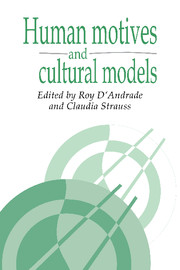1 - Models and motives
Published online by Cambridge University Press: 05 June 2012
Summary
Why do people do what they do? To address this question the papers in this volume take a new look at the nature and sources of human motivation. Human motivation has to be understood as the product of interaction between events and things in the social world and interpretations of those events and things in people's psyches. In this introduction I argue that models of motivation need to reject not only psychobiological determinism but also sociocultural determinism, if the latter is taken to mean that private interpretations are replicas of public messages.
This point may seem obvious, but it runs counter to earlier research paradigms in psychology, which have explained motivation primarily in terms of universal needs and drives, and to currently dominant social and cultural theories, which would make human action a direct precipitate of cultural constructs. In contrast to these approaches, the research presented here shows, on the one hand, that motivation depends on cultural messages and is realized in social interaction, but on the other, that motivation is not automatically acquired when cultural messages have been imparted. Knowing the dominant ideologies, discourses, and symbols of a society is only the beginning – there remains the hard work of understanding why some of those ideologies, discourses, and symbols become compelling to social actors, while others are only the hollow shell of a morality that may be repeated in official pronouncements but is ignored in private lives. Our key question thus becomes: How do cultural messages get under people's skin (both literally and metaphorically)?
- Type
- Chapter
- Information
- Human Motives and Cultural Models , pp. 1 - 20Publisher: Cambridge University PressPrint publication year: 1992
- 116
- Cited by

